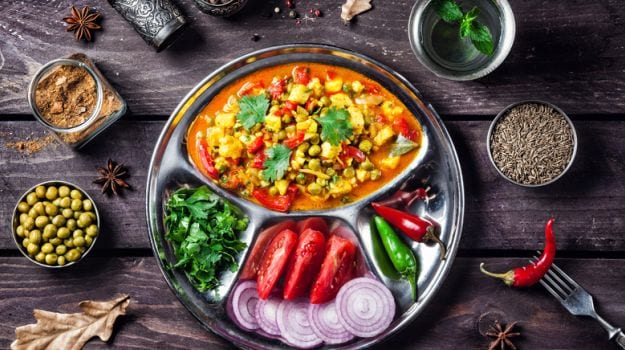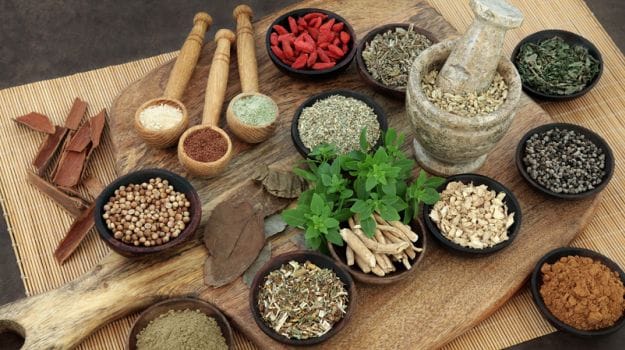The Ayurvedic Diet to Improve Your Health and Well Being
 “Tell me what you eat, and I will tell you what you are.”The words of the 18th century French epicure Jean Anthelme Brillat-Savarin hold true even today in more ways than we can imagine. From our psychology to history, from how we perceive ourselves to our class, caste and preferred identities, food has a great capacity to unravel all of these. Take a look at a man’s plate and you know exactly who he is and who he hopes to be. Amidst all this, of course, also lies the physicality of it all. Food is the basis of life; what we eat makes up our physical, emotional and social selves.
“Tell me what you eat, and I will tell you what you are.”The words of the 18th century French epicure Jean Anthelme Brillat-Savarin hold true even today in more ways than we can imagine. From our psychology to history, from how we perceive ourselves to our class, caste and preferred identities, food has a great capacity to unravel all of these. Take a look at a man’s plate and you know exactly who he is and who he hopes to be. Amidst all this, of course, also lies the physicality of it all. Food is the basis of life; what we eat makes up our physical, emotional and social selves.
Ayurveda, the ancient “science” of medicine and food, is the basis of much of Indian cuisines. As an early body of knowledge, it was not the first one to recognise that food plays a big part in our well being. Like other theories of ancient and medieval medicine in Europe and the Arabic world, it divided all matter according to a theory of humours and postulated that disease was just an imbalance in these humours. The humours could be balanced by following a correct diet.
However, Ayurveda, which is not just one work but a unified philosophy of various theories and postulations handed down orally from ancient times, is significant in the fact that it is quite a comprehensive system, relevant even today. It may not be categorised as science in the modern world but it certainly is an “alternative” system of living-more holistic than much of what we practice. Many of the Ayurvedic principles of eating and cooking are already well entrenched in the Indian kitchens, even if we don’t quite know these. Most of these are practical and rational and worth following-consciously.
Chef Manjit Gill, corporate chef, ITC Hotels, has been following the Ayurvedic way of cooking and eating even in his personal routine. One of the leading spokespersons of this way of life – and eating, Gill explains a few of the principles that we can incorporate easily in our own approach to food. So, here’s demystifying the Ayurvedic Indian diet:
What is Ayurveda?
An ancient body of knowledge concerned with health and longetivity, Ayurveda, as an oral philosophy, may go back to the Vedic times. It is not one text but many strands of thoughts that came together to form one body of the “science of medicine and food”. Some Buddhist and Jain traditions are also incorporated; and the unani system of medicine that relied on knowledge from ancient Greece as practiced by medieval Arab doctors borrows from Ayurveda in turn. The Charak Samhita (2nd century) is a text that codifies much of this knowledge, especially pertaining to diet.

Doshas and gunas
According to Ayurveda, all matter is made up of three doshas (humours) and has three specific properties or gunas. The doshas are called Vata, Pitta and Kapha. The gunas are satva, rajas and tamas. The doshas and gunas need to be balanced for perfect health.
6 tastes – each pertaining to a different guna
Foods with the three gunas, can be further divided according to their tastes as those that are sweet, salty, sour, pungent, bitter, astringent. No food is good or bad. Everything needs to be eaten in moderation and balance. The taste of food is emphasised in Ayurvedic cooking-not merely its medicinal properties.
Seasonality
One of the biggest tenets of an Ayurvedic diet is its emphasis on seasonality. Food must be cooked fresh and with seasonal ingredients because these are what the body needs in each season to counter the disturbance of the doshas and aid digestion. Foods with a hot nature (pungent and sweet) must thus be consumed during the cold season to promote digestion. Those that are deemed to be cooling are good for the summers. During the rains, sweet, sour and salty foods are preferred to aid a weakened digestion. Ghee that is a heating food is also recommended because this is when the digestive fire weakens.

Personalisation
Diets need to be personalised also to take into account individual body types. The three humours are present in different proportions in each body. And a physical and emotional examination can determine whether the vatta, pitta or kapha is higher. Foods with the opposite properties need to be eaten to balance these doshas. So, people with more kapha/water, who are lethargic and heavy may do well with more pungent or bitter food, to increase the fire element in their bodies and counter the water.
Some basic principlesThese include eating food that is freshly cooked, in a balanced quantity, and to suit one’s constitution and temperament. Food also needs to be eaten mindfully with proper attention to its taste.
[“source-ndtv”]




